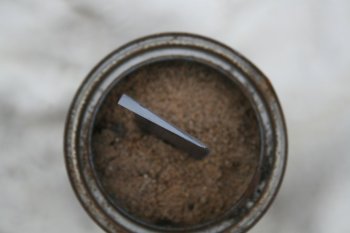Doug Lester
Well-Known Member
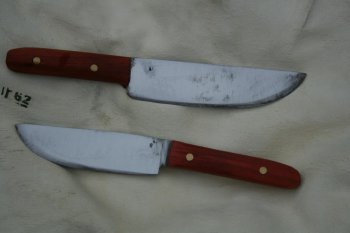
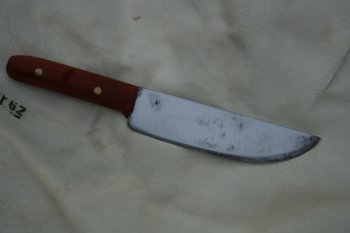
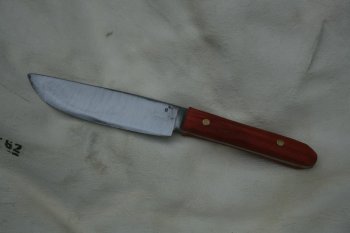
I made two test knives from 52100 to test heat treating methods that I have been using.
Knife A was 10.75" OAL with a 6.5 X1.5X3/16" blade. It was heated to just above non-magnetic in a forge running at about 1550-1600° and taken in and out of the fire for a few seconds at a time to keep the austinizing temperature lower. It was then quenched in 350° peanut oil and held long enough for the tang to loose color, which was held out of the quenchant. It was then up quenched to a 430° bath of peanut oil in an electric roaster and held there for 4 hours for austempering/isothermal tempering, depending on what book you go by.
Knife B was 10.5" OAL with a blade 5.5X1.5X3/16". It was austinized as closely as I could to blade A but it was quenched in 520° peanut oil for about 10 seconds and then allowed to cool to ambient temperature. The Ms point for this steel is around 490° at this austinization temperature. It was then tempered in my kitchen oven at 425° for 3 two hour cycles.
Both blades were flat ground with a convex secondary bevel ground with a slack belt.
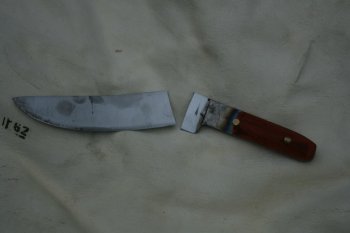
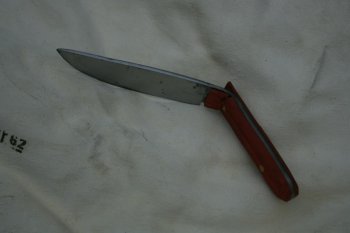
I clamped up both knives in my leg vice and did the 90° bend test on them. I had to use a breaker bar to get both to bend and it may have taken just a little more force to bend knife B than knife A.
Knife A broke right in front of the ricasso just as I gave it that little extra push to make it to 90°. It broke right through the area where I had hot stamped the letter A.
Knife B was bent to 90° without the knife breaking. As you can see, it bent at the tang right behind the heal of the blade wrecking the Redheart scales. The blade itself bent only slightly and returned to straight. After I photographed the knife I had to clamp it back in the vice and give about 9-10 blows from a 4lb hammer to break the blade.
Continued below.
Doug

